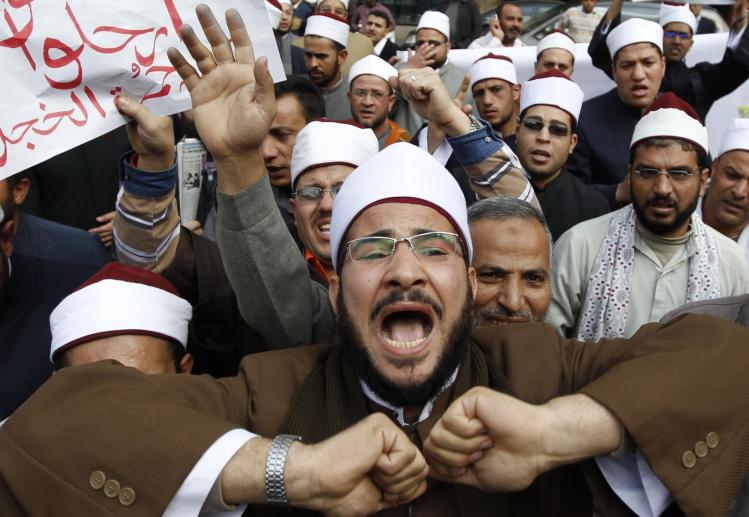
The rise of fundamentalism and religious ultra-orthodoxy has taken much of the West by surprise. But the shock is not limited to the world’s well-off democracies.
For most of the twentieth century, secular and usually left-leaning advocates of national liberation in the Third World fought twin battles: against Western colonialism, and against what they saw as the “backward” and “passive” religious traditionalists among their own people.
Suddenly, those supposedly backward believers are no longer passive. They are fighting to reimpose the faiths of their forebears. And in its most extreme forms, the religious pushback is genuinely frightening. That the Islamic State is, in certain respects, even more extreme than al-Qaeda justifies our alarm.
Ultra-orthodoxy in more benign forms is also on the rise in democratic countries with long traditions of religious tolerance. Marx derided religion as an opiate that was destined to fade away. What happened to make faith one of the most dynamic forces in the world?
The political philosopher Michael Walzer has spent an exemplary life grappling with the intellectual mysteries at the crossroads of modernity, religion, democracy, and justice. His latest book, The Paradox of Liberation: Secular Revolutions and Religious Counterrevolutions, examines the history and trajectory of national liberation movements in Israel, India, and Algeria. It could hardly be better timed. It asks why the secular revolutionaries, far from marginalizing religion to the private sphere through what they saw as “consciousness raising,” actually produced a backlash, calling forth often radical forms of religious assertion.
National liberation, he writes, “is a secularizing, modernizing and developmental creed.” Its champions seek not only to free their countries from colonization but also to free their own people from what they see as the burdens of old religious understandings.
The people are not always eager to go along. “Raising consciousness is a persuasive enterprise,” Walzer writes, “but it quickly turns into a cultural war between the liberators and what we can call the traditionalists.”
Many who rose against colonial rule were themselves shaped by ideas first propagated in the lands of their colonial masters -- France in the case of Algeria, Britain in India and Israel. The new leaders were simultaneously opposed to Western imperialism and avid westernizers within their own societies.
“I am the last Englishman to rule in India,” Jawaharlal Nehru, the father of Indian independence, told John Kenneth Galbraith, the U.S. ambassador to India in the Kennedy years. Indeed, Nehru was a product of some of Britain’s finest upper-class institutions -- the Harrow school; Trinity College, Cambridge; and the Inns of Court.
Thus, while secularizing leaders were generally on the left, they were often viewed by the traditionalist, religious masses as elitists. Religious revivals that followed independence, Walzer writes, “were fueled by the resentment that ordinary people, pursuing their customary ways, felt toward those secularizing and modernizing elites, with their foreign ideas, their patronizing attitudes, and their big projects.”
One of the many virtues of Walzer’s subtlety is that he helps us understand that while the ideologies of today’s fundamentalists and ultra-orthodox are rooted in ancient or medieval ideas, these movements are, in a peculiar way, thoroughly modern. Their resistance to secularization “soon becomes ideological and therefore also new: fundamentalism and ultra-orthodoxy are both modernist reactions to attempts at modernist transformation.”
Reactionary religious politics was, in part, a response to the governing failures of secular ideologues who had been inspired by various forms of nationalism and socialism. But even where secularists succeeded in building working societies (Israel and India), their ideologies lacked the deep cultural roots capable of inspiring the same level of loyalty religious commitments can command. And so, over time, Walzer writes, young people “drifted away, moving toward the excitements of global pop culture or toward the fervency of religious revival.”
Walzer is too good a philosopher to write a simple handbook for a liberal revival. Instead, he outlines a useful long-term project: Liberationists should continue to press for religious reform, but they also need to reform themselves by engaging seriously with the religious traditions of the people they propose to liberate.
This means challenging religious reactionaries for their support of various forms of oppression, notably the subjugation of women, and maintaining a strong defense of democracy and free expression. But it also means engaging traditions from the inside, taking into account their contributions and ending the cycle of pure acceptance or pure rejection of religious insight.
In battling extreme religious orthodoxy, liberal secularists will be more successful if they embrace a certain wariness of their own orthodoxies.
E. J. Dionne’s email address is [email protected]. Twitter: @EJDionne.
(c) 2015, Washington Post Writers Group

